Distinguished and respectable readers
As the historical introduction of chemistry was explained in a previous publication (“Chemistry and its scientific divisions”); in this opportunity we present the atomic structure that is intimately related to the atomic-molecular theory and Bohr's atomic model.
Distinguidos y respetables lectores
Como ya se explicó la introducción histórica de la química en una publicación anterior (“La Química y sus divisiones científicas”); en esta oportunidad se presenta la estructura atómica que se relaciona íntimamente con la teoría atómico-molecular y el modelo atómico de Bohr.
We can refer to the experience of some philosophers of classical Greece, who ventured the hypothesis that "...matter is made up of indivisible and invariable particles which they called Atoms...". The first evidence of the certainty of this theory was not obtained until the 18th century with the work of Lavoisier and Proust; at the beginning of the 19th century, Dalton established a theory which, with certain inaccuracies, laid the foundations from which the different formulations of what would come to be called Atomic-Molecular Theory were developed.
Se puede referir la experiencia de algunos filósofos de la Grecia clásica, los cuales aventuraron la hipótesis de que “…la materia está constituida por partículas indivisibles e invariables a las que denominaron Átomo…”. Las primeras evidencias de la certeza de esta teoría no se obtuvieron hasta el siglo XVIII con los trabajos de Lavoisier y Proust; a principios del siglo XIX, Dalton estableció una teoría que, con ciertas inexactitudes, sentó las bases a partir de las cuales se desarrollaron las diferentes formulaciones de lo que daría en llamarse Teoría Atómico-Molecular.
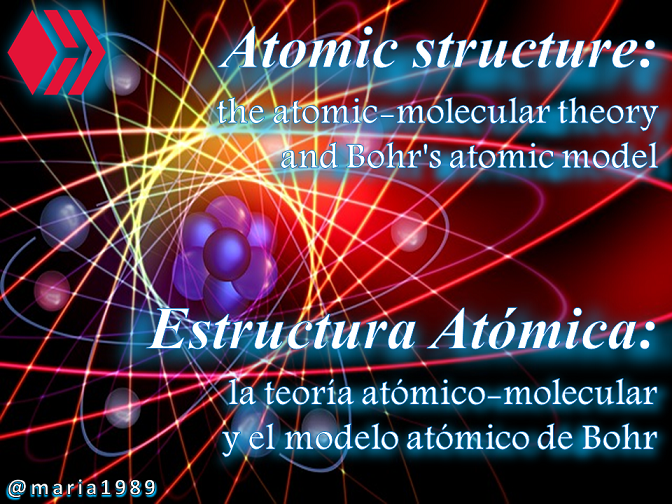
Atom Background (Fondo de Átomo)
According to Dalton's exposition, "the material is made up of infinitely small particles called atoms which, when united together, form molecules of compound bodies"; chemical transformations take place in atoms that have a simple relationship with each other and remain indivisible. The work carried out by Becquerel in 1896 with radioactive salts eliminated the concept of indivisibility accepted to date, and led to the establishment of different atomic models that proposed the existence of positively and negatively charged particles within the same atom.
Según la exposición de Dalton, “la material está formada por partículas infinitamente pequeñas llamadas átomos que al unirse entre sí forman moléculas de cuerpos compuestos”; las transformaciones químicas tienen lugar en átomos que guardan entre sí una relación simple y que permanecen indivisibles. Los trabajos llevados a cabo por Becquerel en 1896 con sales radioactivas eliminaron el concepto de indivisibilidad aceptado hasta la fecha, y dieron lugar al establecimiento de diferentes modelos atómicos que planteaban la existencia de partículas de carga positiva y negativa en el interior de un mismo átomo.
The atomic model that was initially given credit was Rutherford's model, which became known in the early years of the 20th century and assumed the existence of a central nucleus formed by positively charged protons and a crust of negatively charged electrons revolving around the nucleus.
El modelo atómico al que inicialmente se le dio crédito fue el de Ernest Rutherford, dado a conocer en los primeros años del siglo XX, y que suponía la existencia de un núcleo central formado por Protones de carga positiva y una corteza de Electrónes con carga negativa girando en torno al núcleo.
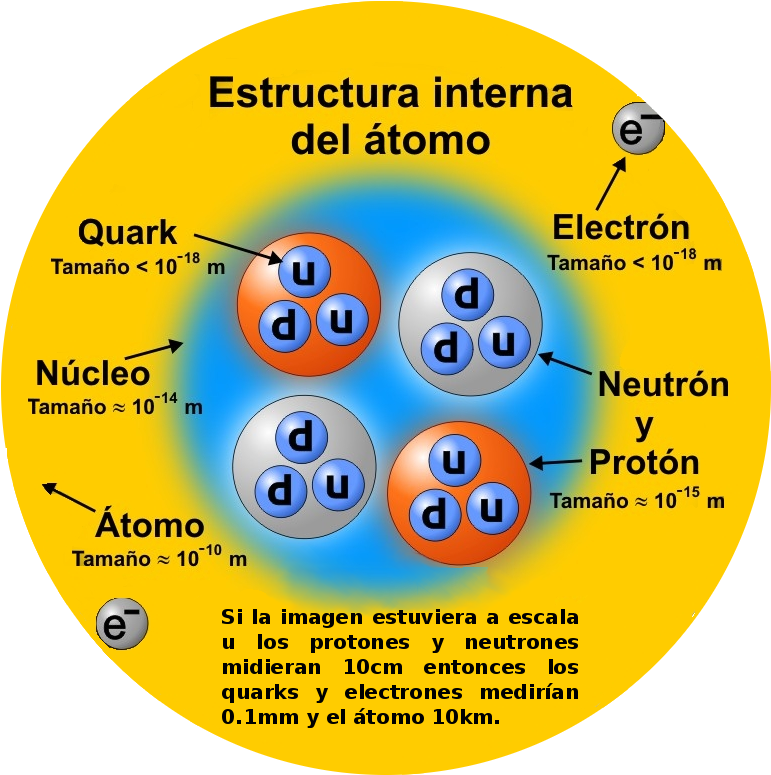
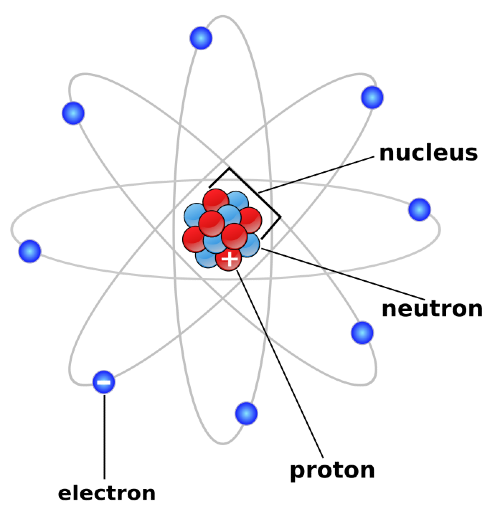
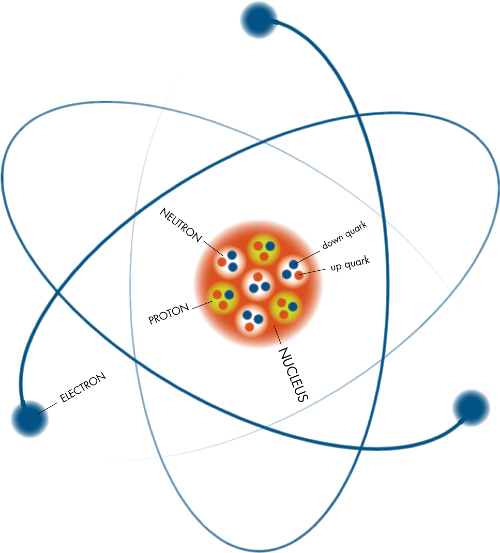
Atom 1 ❀ Atom 2
Any electric charge in motion radiates energy in the form of light, heat or other waves: thus, the constant motion of electrons proposed by Rutherford would determine their loss of energy and their fall into the nucleus.
Toda carga eléctrica en movimiento irradia energía en forma de ondas luminosas, calóricas o de otros tipos: así, el movimiento constante de los electrones propuesto por Rutherford determinaría su pérdida de energía y su caída al interior del núcleo.
The theory formulated by the Danish researcher Niels Bohr in 1913 is based on a dynamic model of the atom and, although the laws of classical mechanics, introduces the concept of Quantization developed by Max Planck to explain black body radiation.
La teoría formulada por el investigador danés Niels Bohr en 1913 parte de un modelo dinámico del átomo y, aunque las leyes de la mecánica clásica, introduce el concepto de Cuantización desarrollado por Max Planck para explicar la radiación del cuerpo negro.
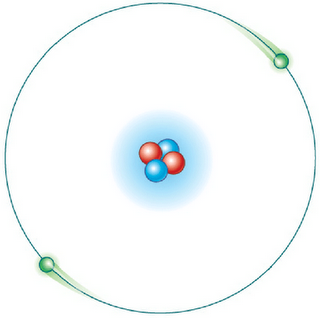
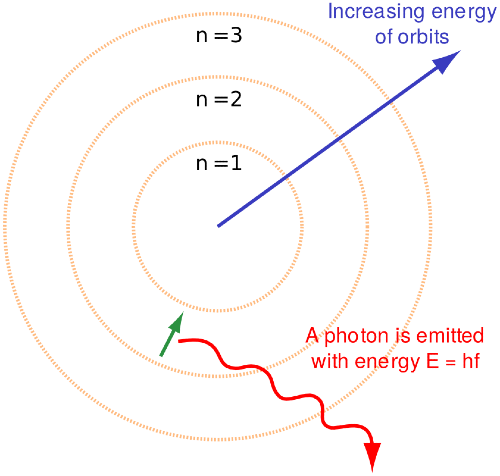
In this model, the electron is considered to be a material particle that rotates describing circular orbits around the nucleus, thus determining the generation of an orbital angular momentum that is quantized and can only acquire discrete values multiples of the Planck action quantum (h = 6,624.10-27 erg/s):
En dicho modelo se considera que el electrón es una partícula material que gira describiendo órbitas circulares alrededor del núcleo y determinando, por consiguiente, la generación de un momento angular orbital que está cuantizado y sólo puede adquirir valores discretos múltiplos del cuanto de acción de Planck (h = 6,624.10-27 erg/s):
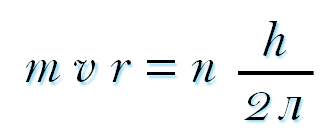
In this expression:
En esta expresión:
In the model proposed by Bohr, it is essential to consider that the electron-nucleus system can present different energy states, since the energy is also quantized.
En el modelo propuesto por Bohr resulta esencial la consideración de que el sistema electrón-núcleo puede presentar diferentes estados energéticos, ya que la energía también se encuentra cuantizada.

This is the expression of Bohr's second postulate that allows us to obtain the value of the energy for each energy state of the atom. In it:
Esta es la expresión del segundo postulado de Bohr que permite obtener el valor de la energía para cada estado energético del átomo. En ella:

Where:
f
is the frequency of the wave radiation.
Siendo:
f
la frecuencia de la radiación ondulatoria.
Bohr's atomic model has been modified since it was first proposed by various contributions based on wave criteria and is currently valid only for the hydrogen atom.
El modelo atómico de Bohr ha sido modificado, desde que fue planteado, mediante diversas aportaciones fundamentadas en criterios ondulatorios y en la actualidad es válido solamente para el átomo de hidrógeno.
ALWAYS THANK YOU
FOR YOUR LOVING CARE !
FOR YOUR LOVING CARE !
¡ SIEMPRE GRACIAS
POR SU AMABLE ATENCIÓN !
POR SU AMABLE ATENCIÓN !

I dedicate this report to the educational and cultural training of everyone who knows its importance and respects the value of integral education
Dedico este informe a la formación educativa y cultural de todo aquel que conoce su importancia y respeta lo valioso de la educación integral
❀❀@maria1989
Reference articles (Artículos de consulta):
❀Atomic-molecular theory (Teoría atómica molecular)
❀Atomic theory (Teoría atómica)
❀ Bohr's atomic model (Modelo atómico de Bohr)
❀Bohr's atomic model (modelo atómico de Bohr)<br
C R E D I T S (Créditos):
❀ The images (public domain) were re-edited with the applications: Paint and Microsoft Office Power Point, formatted as PNG file.
(las imágenes de dominio público fueron reeditadas con las aplicaciones: Paint y Microsoft Office Power Point, formateadas como archivo PNG)
❀All this material is the product of a university research for the chemistry-physics department (L.U.Z.), it is directed to the primary school level and high school, for the pleasure and satisfaction of those who are requesting this information.
(todo este material es producto de una investigación universitaria para la cátedra de química-física (L.U.Z.), va dirigido al nivel escolar de primaria y también secundaria, para el agrado y satisfacción de quienes estén solicitando dicha información)

Thanks for your contribution to the STEMsocial community. Feel free to join us on discord to get to know the rest of us!
Please consider delegating to the @stemsocial account (85% of the curation rewards are returned).
You may also include @stemsocial as a beneficiary of the rewards of this post to get a stronger support.
Congratulations @maria1989! You have completed the following achievement on the Hive blockchain and have been rewarded with new badge(s):
Your next target is to reach 5000 upvotes.
You can view your badges on your board and compare yourself to others in the Ranking
If you no longer want to receive notifications, reply to this comment with the word
STOPCheck out the last post from @hivebuzz:
Support the HiveBuzz project. Vote for our proposal!
Aplaudo siempre tu desempeño. Dios te bendiga